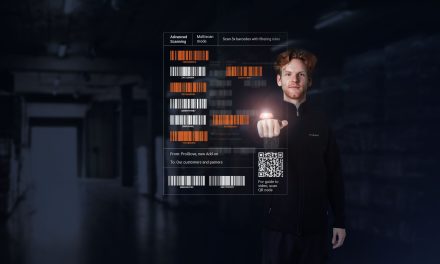
Waterscan has reported a surge in enquiries from across the logistics and transport industry. While the focus of sustainability efforts in the sector has to date been on carbon reduction more and more companies are waking up to water and the potential cost savings that can be achieved through its effective monitoring and management.
“We have recently signed contracts with Network Rail and the Canal & River Trust and it’s no surprise that the transport and logistics sector is taking action on water at this time,” says director Claire Yeates. “There are three clear drivers for action. First the need for stringent cost management at a time of potentially prolonged economic uncertainty. Water is often seen as a largely insignificant figure on the P&L but sound water management can have both a fast and long-term positive impact on the bottom line. The second is ensuring compliance within the regulatory framework of the Water Act and associated environmental legislation and targets. Finally, there’s the imminent shake-up of the water market which will see water supply becoming a competitive retail market in April 2017. Companies are coming to us to get their house in order before the changes take place to maximise the opportunities that the open water market offers. If you’re a multi-site operation you could currently be dealing with up to 35 different water companies all with different tariff structures so consolidating billing and switching to a single supplier could save considerable admin time and effort, and cost.”
While water consumption is relatively low in logistics compared to some other sectors like hospitality, usage is still considerable when freight and vehicle washing is taken into consideration along with washroom, catering and cleaning operations across multiple warehouse, distribution hub and office sites.
Savings can be made in several ways tailored to the organisation concerned and as there’s no risk to operational continuity the options are worth exploring. Solutions typically include leak detection and correction, validation of surface water drainage charges and the identification and resolution of billing inaccuracies. There’s even help available with the procurement process in the context of the new open market framework.
Significant savings in water consumption can be made from re-use initiatives. Rainwater harvesting can reduce mains water consumption by up to 30% making it a good option for organisations responsible for warehousing and depots with expansive roof areas. Greywater recycling which could be beneficial for companies operating vehicle washing facilities can save as much as 40%. Aside from lower metered water bills there’s the added benefit of reduced risks of storm water flooding, decreased sewerage charges and lower energy costs associated with water supply through deploying such technologies.
“We have achieved considerable success through deploying a variety of water saving solutions within the logistics and transport sector,” continues Yeates. “A project we undertook for Govia Thameslink/Southern Railway will save approximately 70% of current water consumption at the station train wash. This gives substantial savings in both supply and sewerage charges. With increasing water scarcity in the UK as a result of climate change, it also mitigates any risk of a drought order preventing the trains being cleaned. Our recycling system is designed to filter the train wash water by removing the suspended debris to enable the water to be re-used. In a project for one of the UK’s largest logistics operations we identified cost savings of £340,000 per annum with a 34% reduction in water consumption at one warehouse site alone.”
Waterscan suggests that the first step for any company is to get a good understanding of the business’ current operational water footprint through their free Water Check analysis. This will determine how much water is used, where, when and how. This data can then be benchmarked against similar users and advice on water reduction strategies provided.



